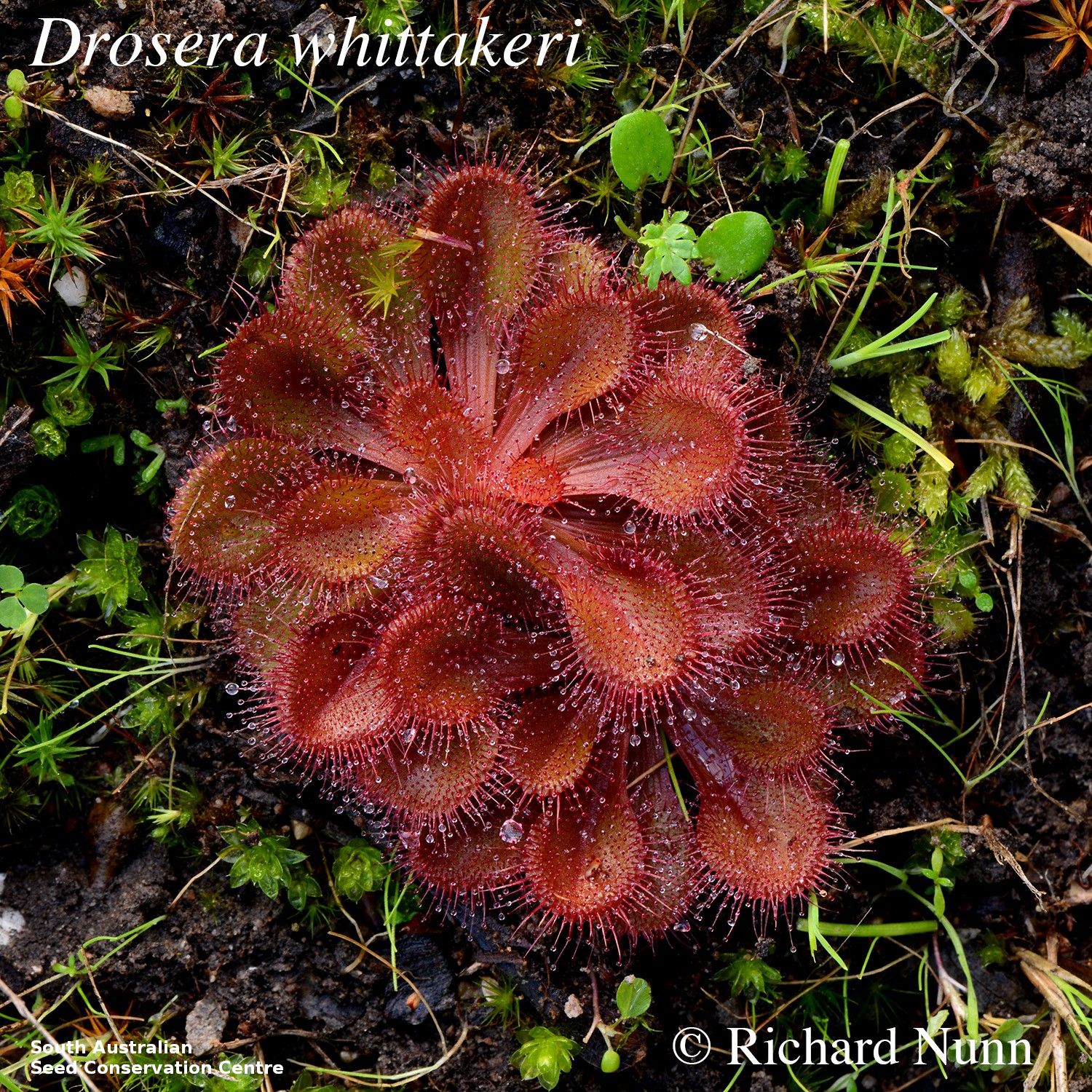
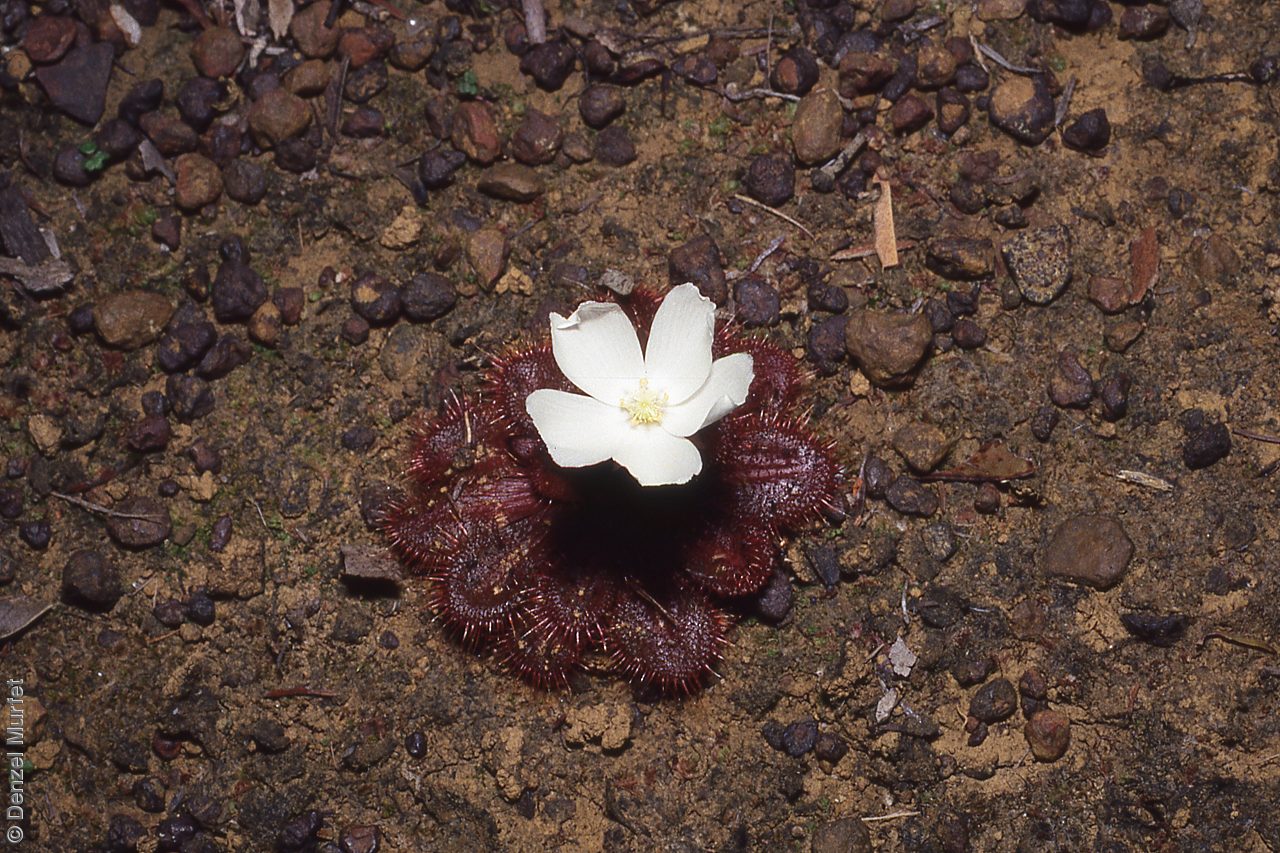
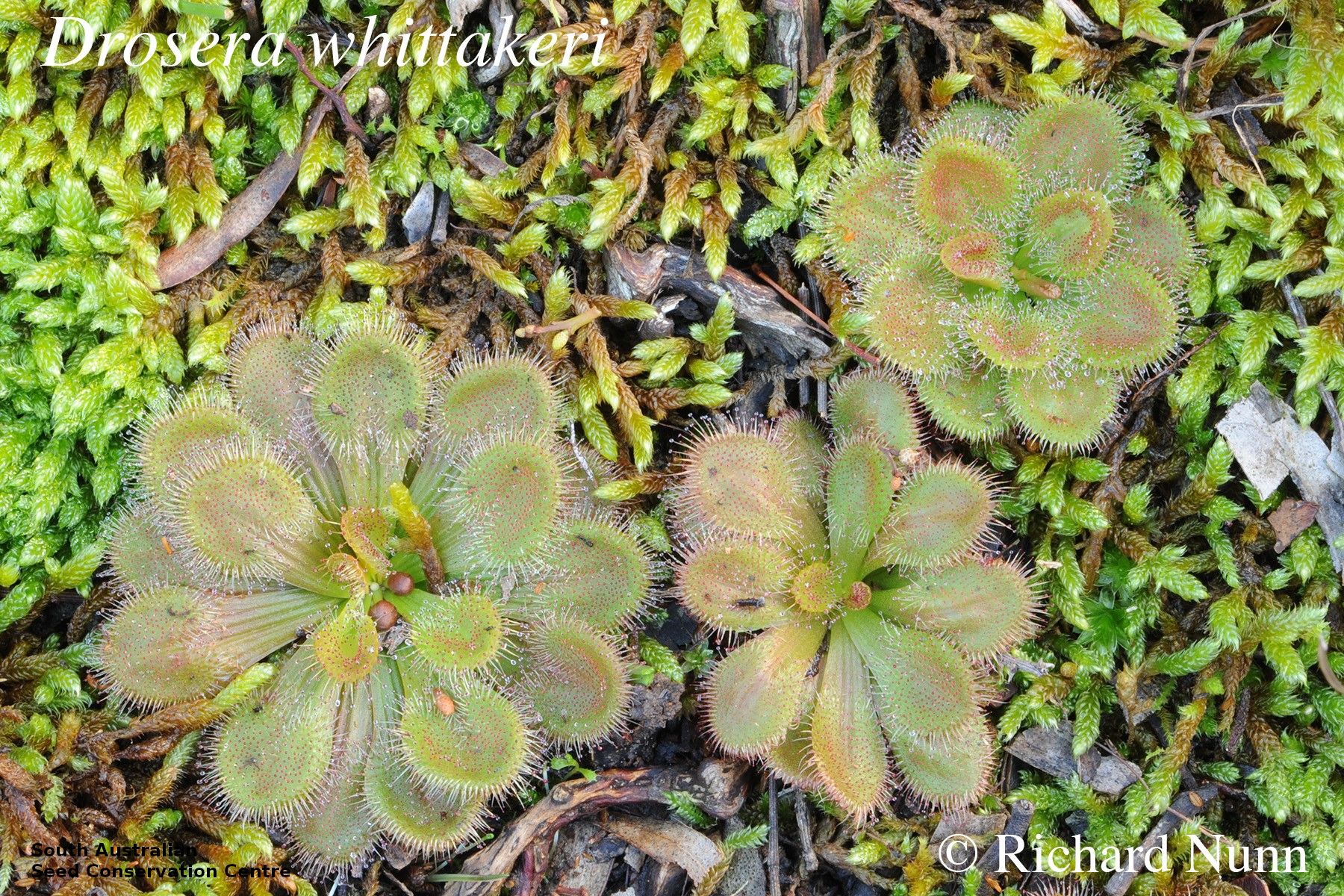
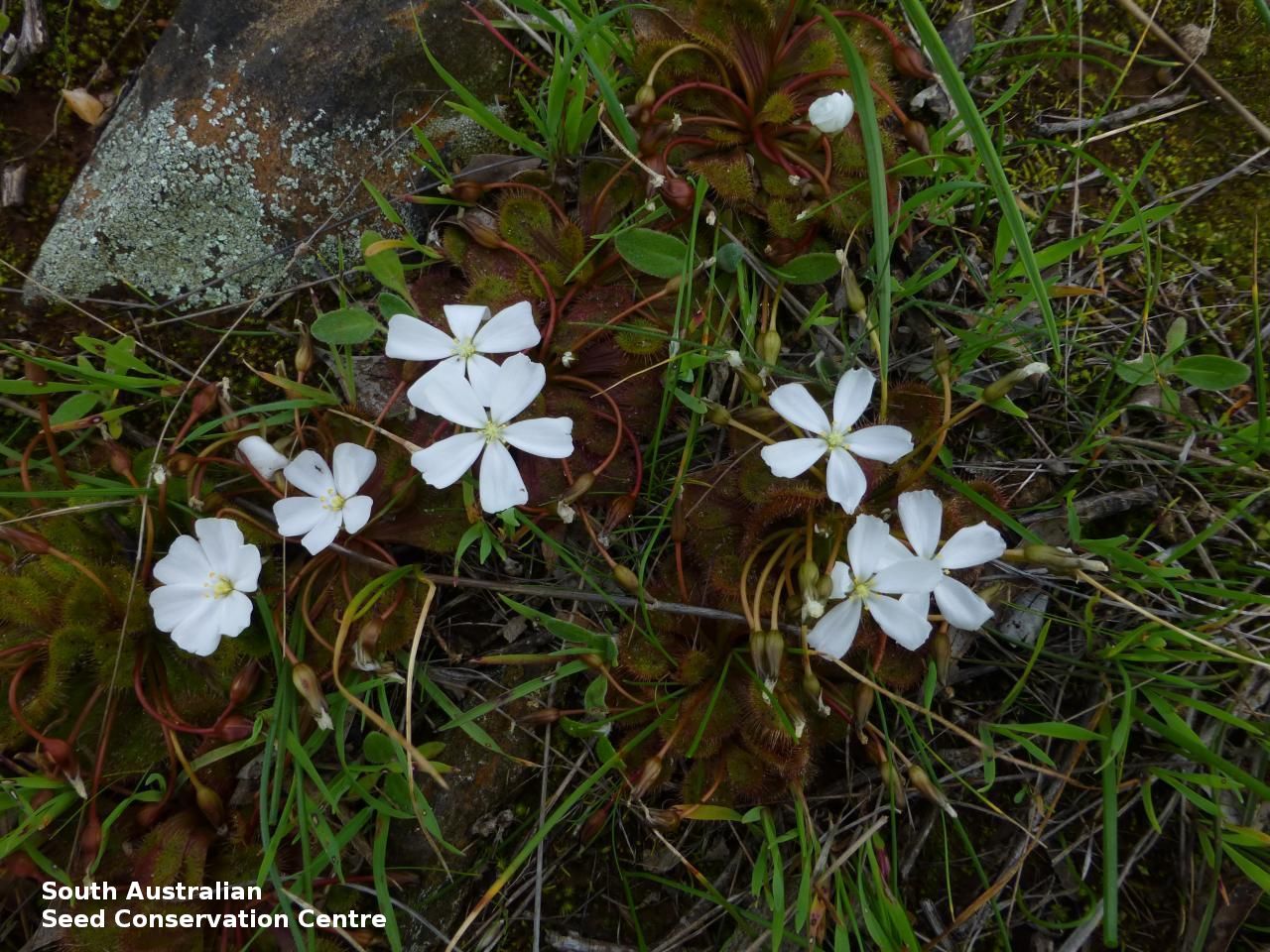
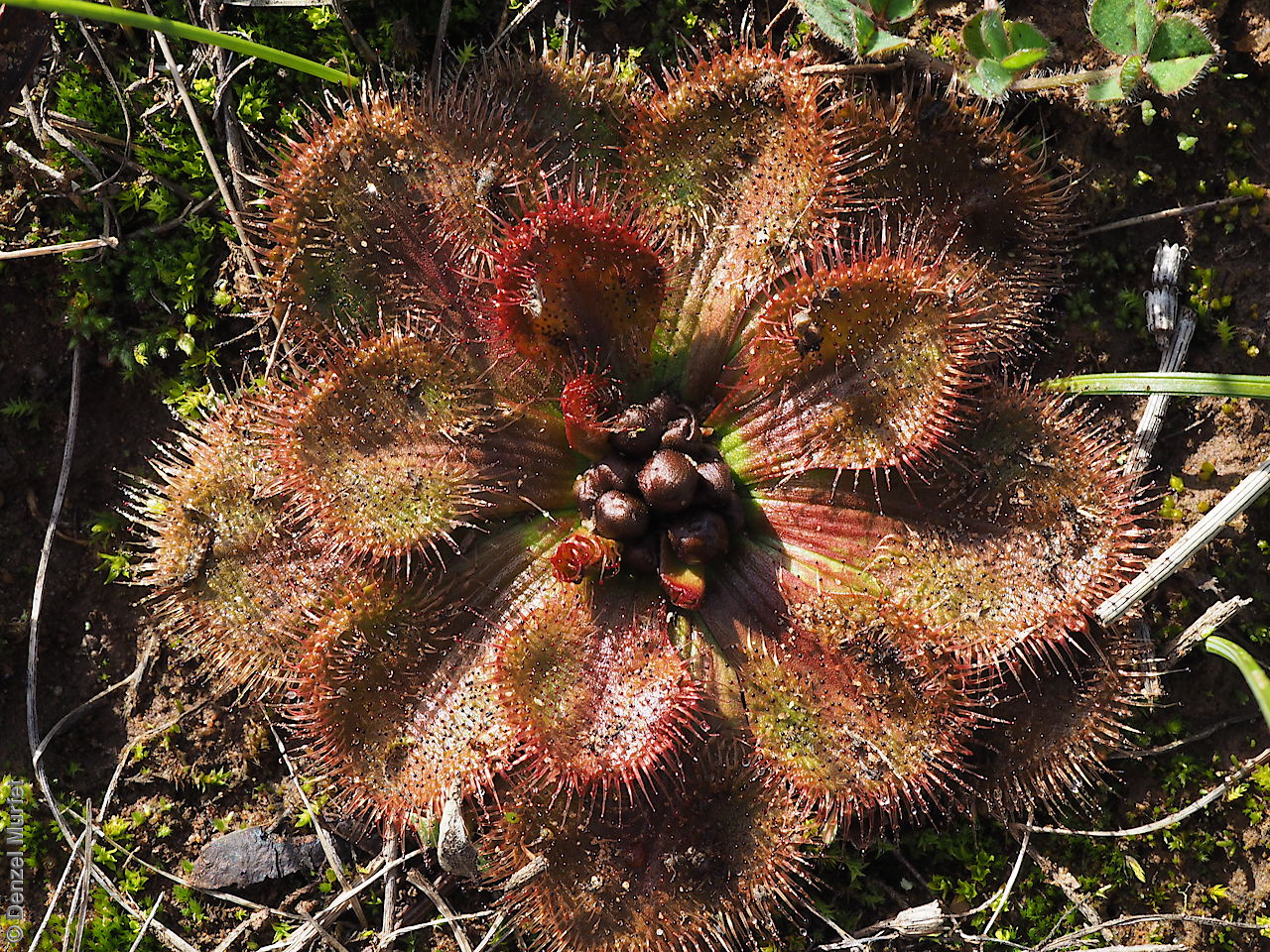
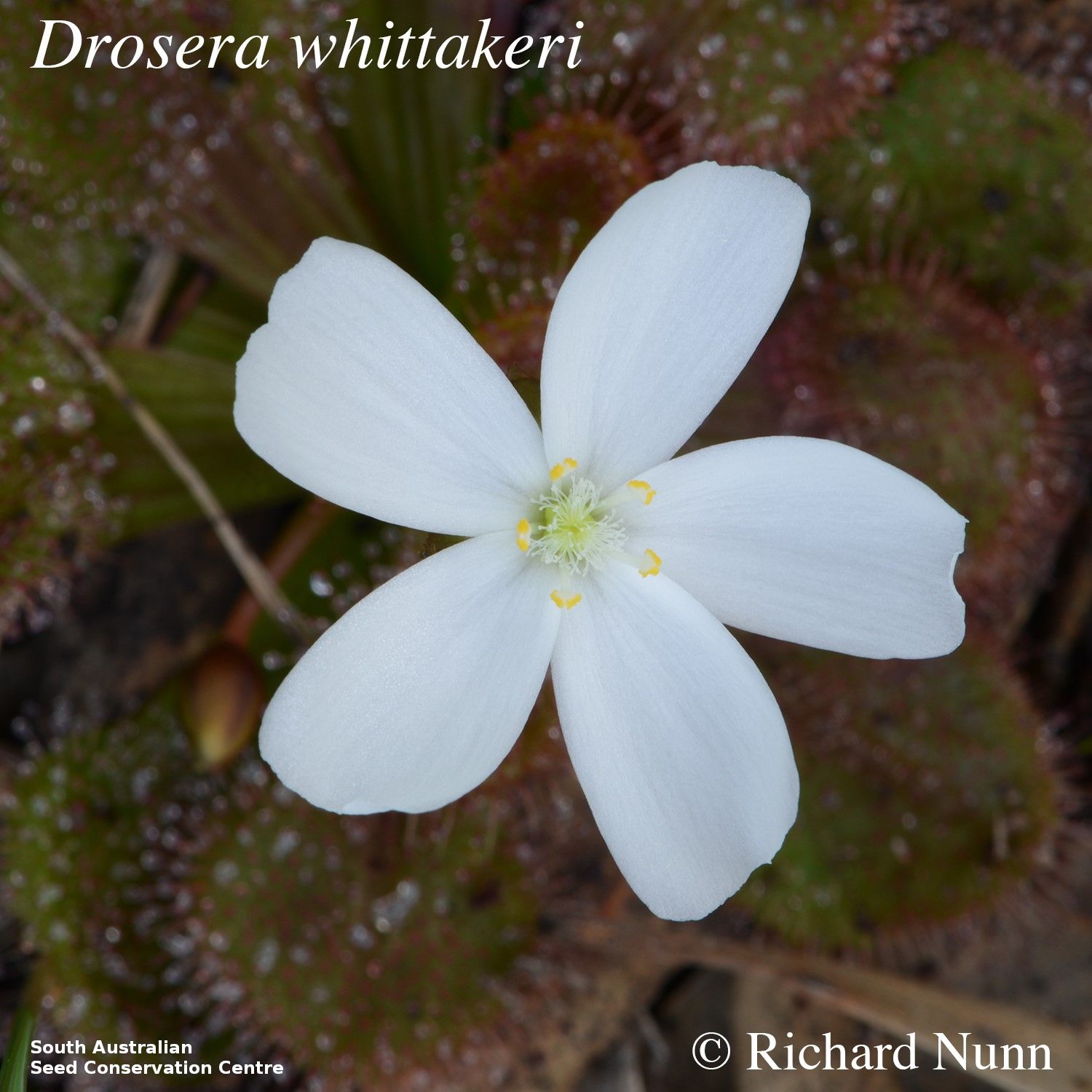
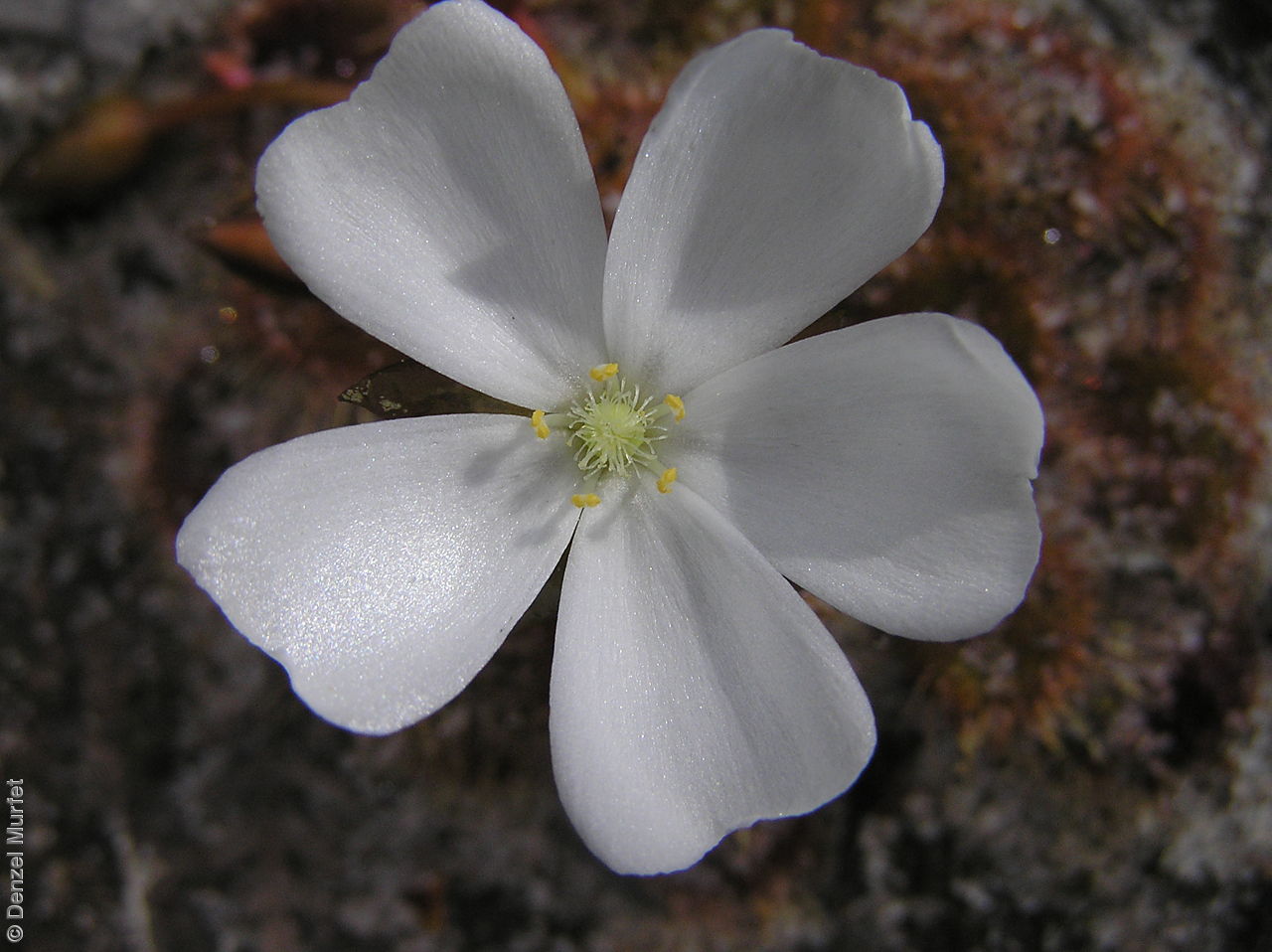
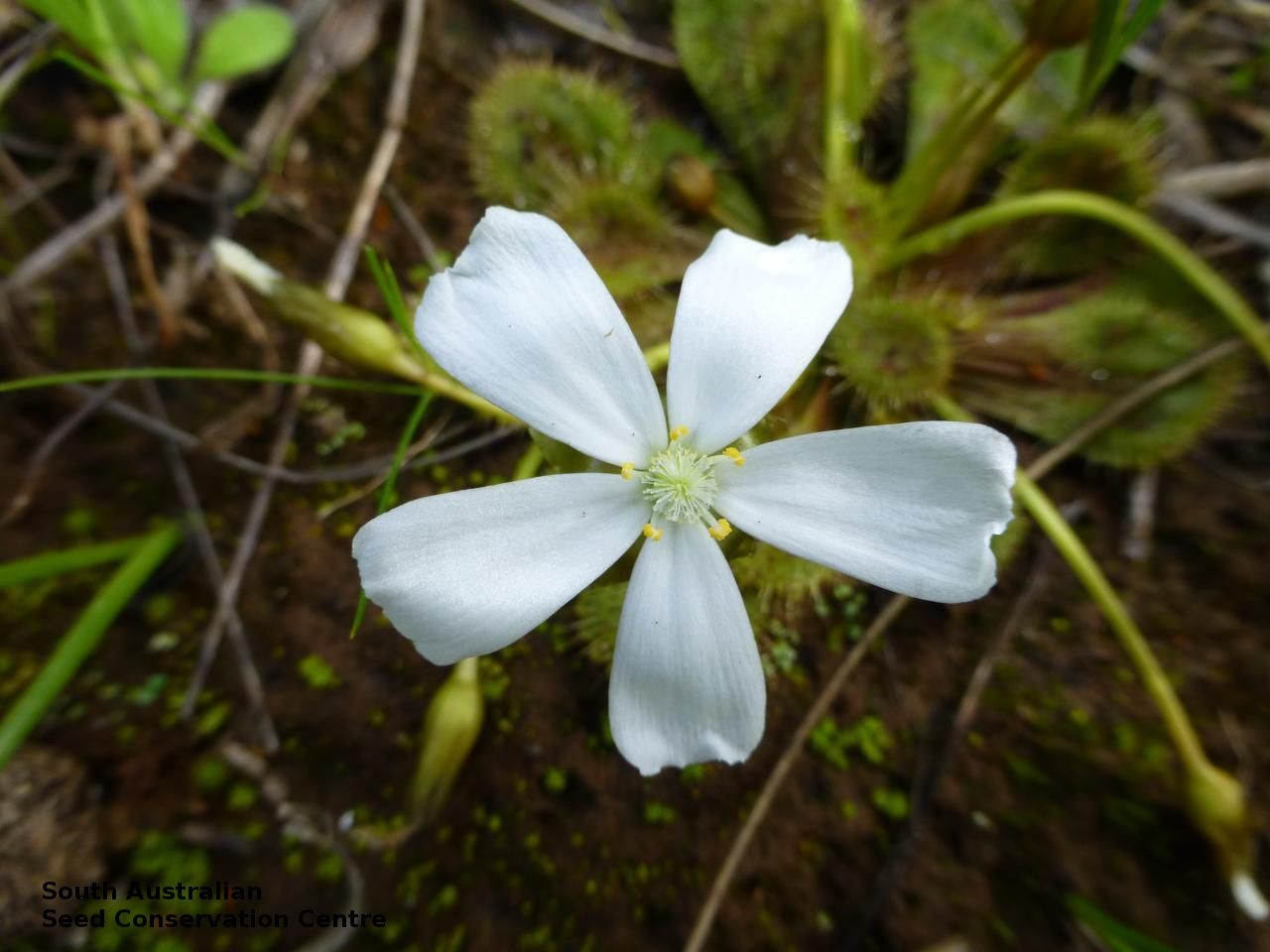
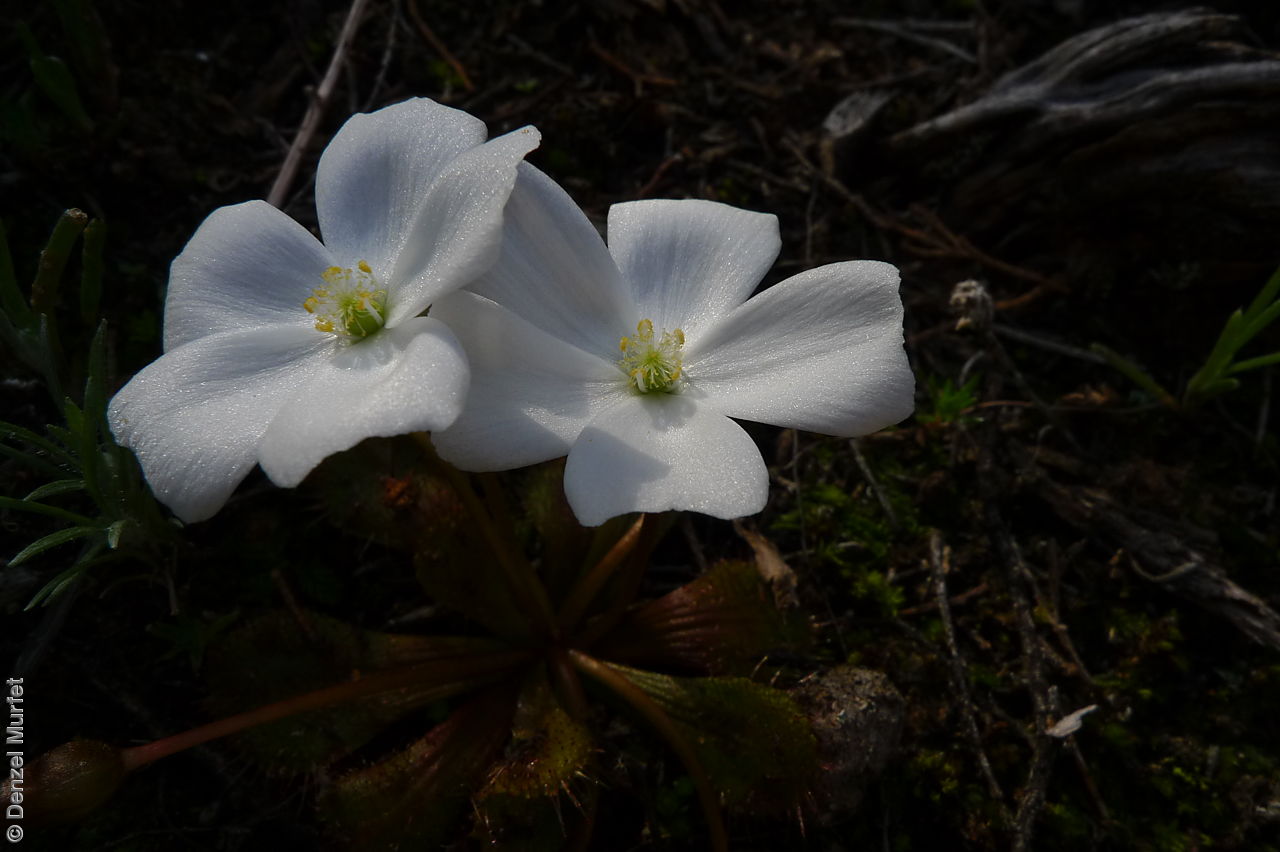
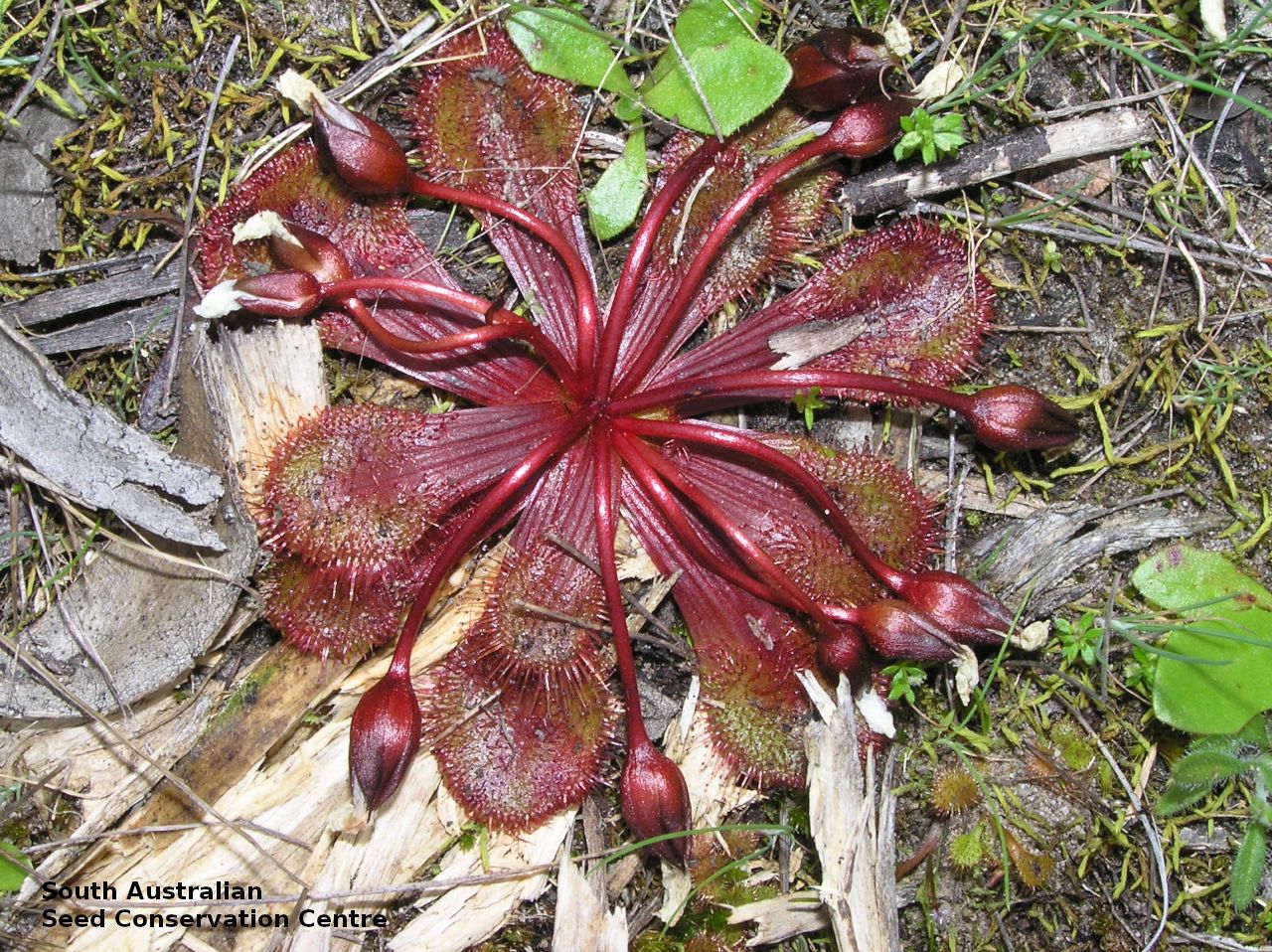
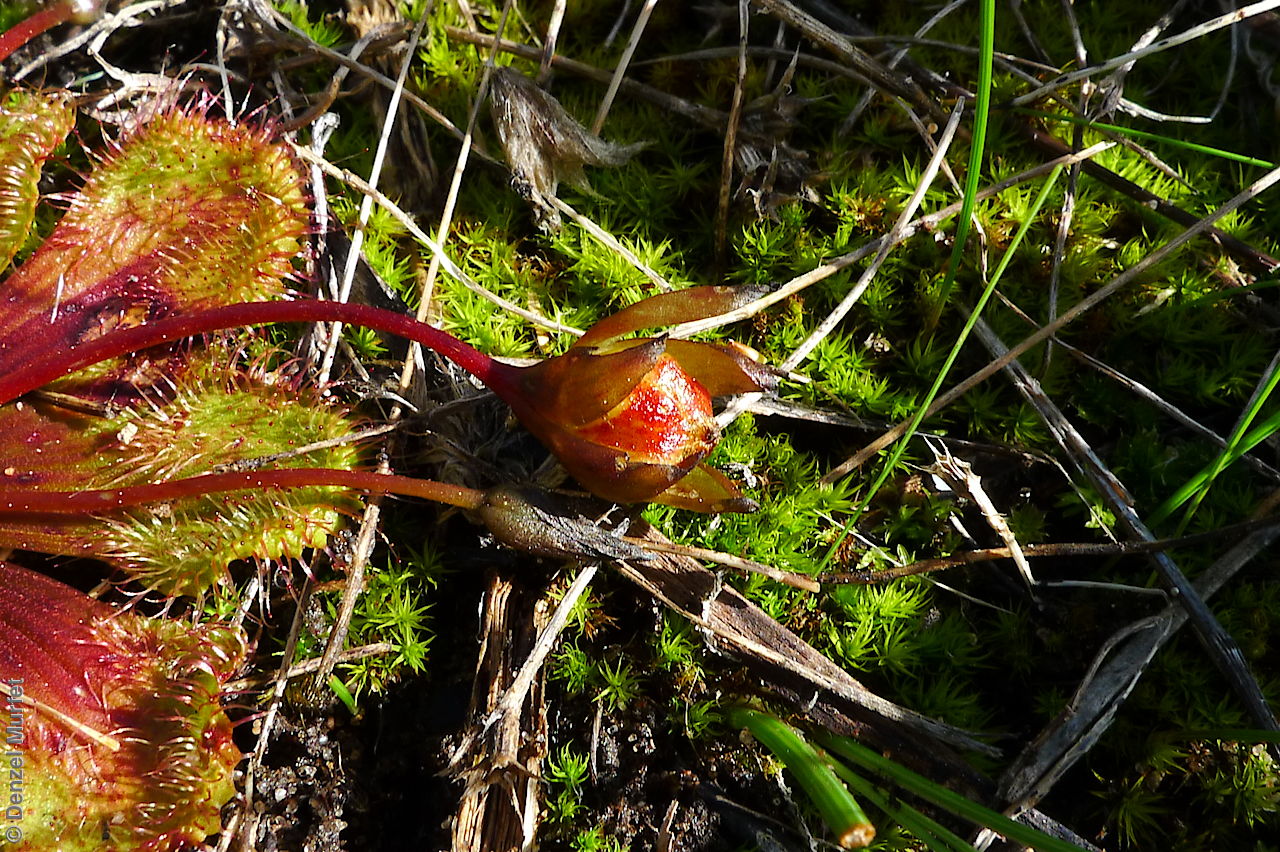
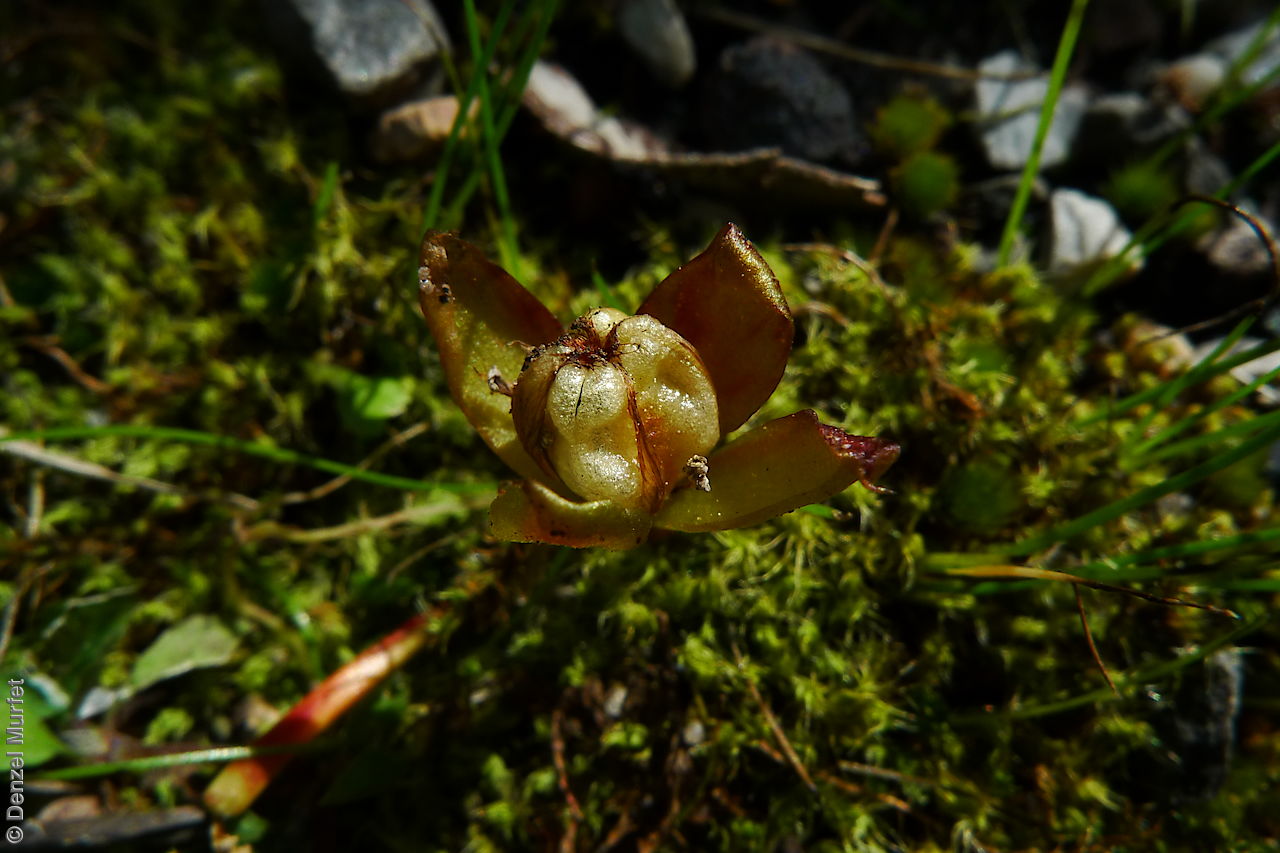
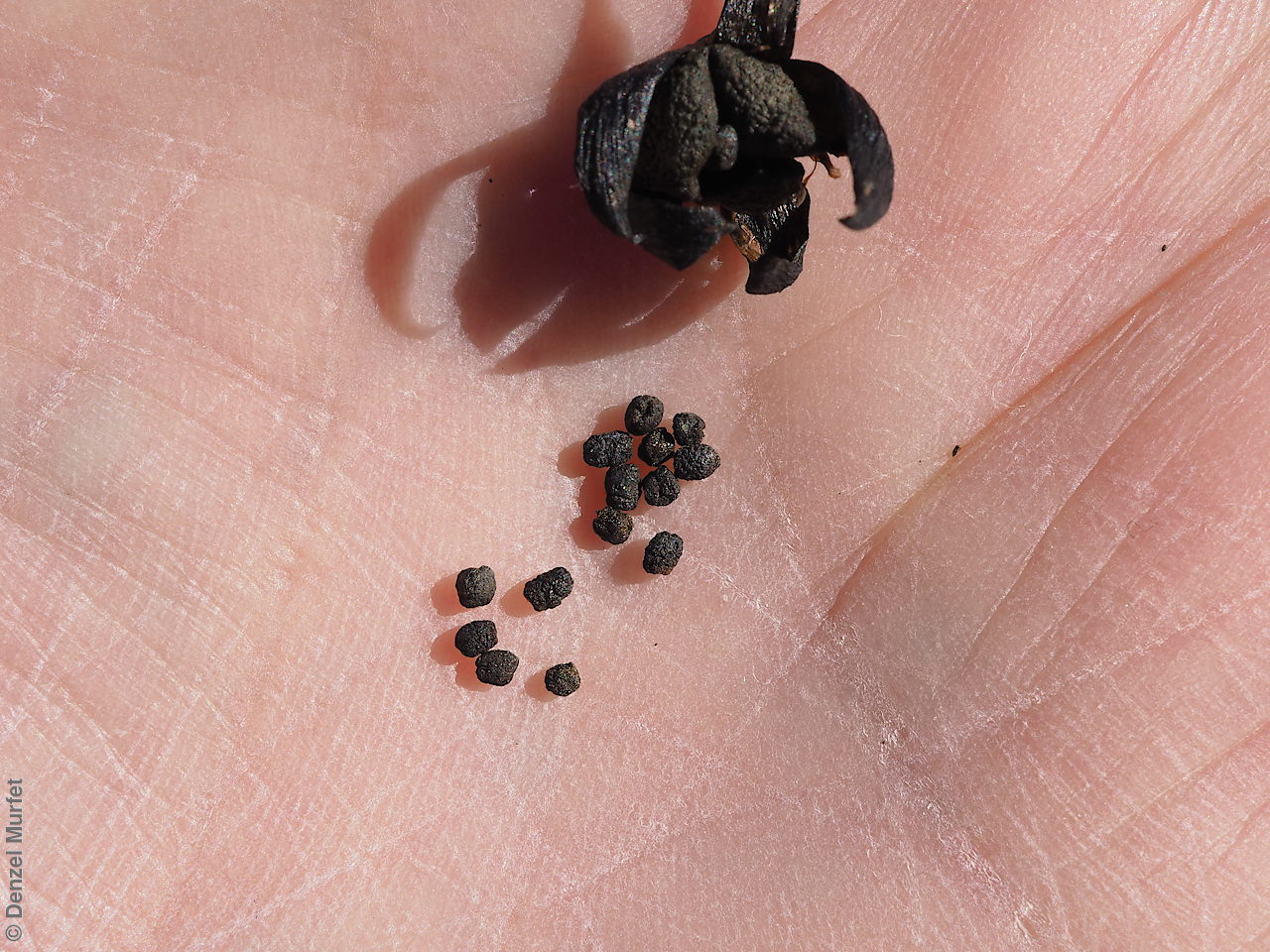
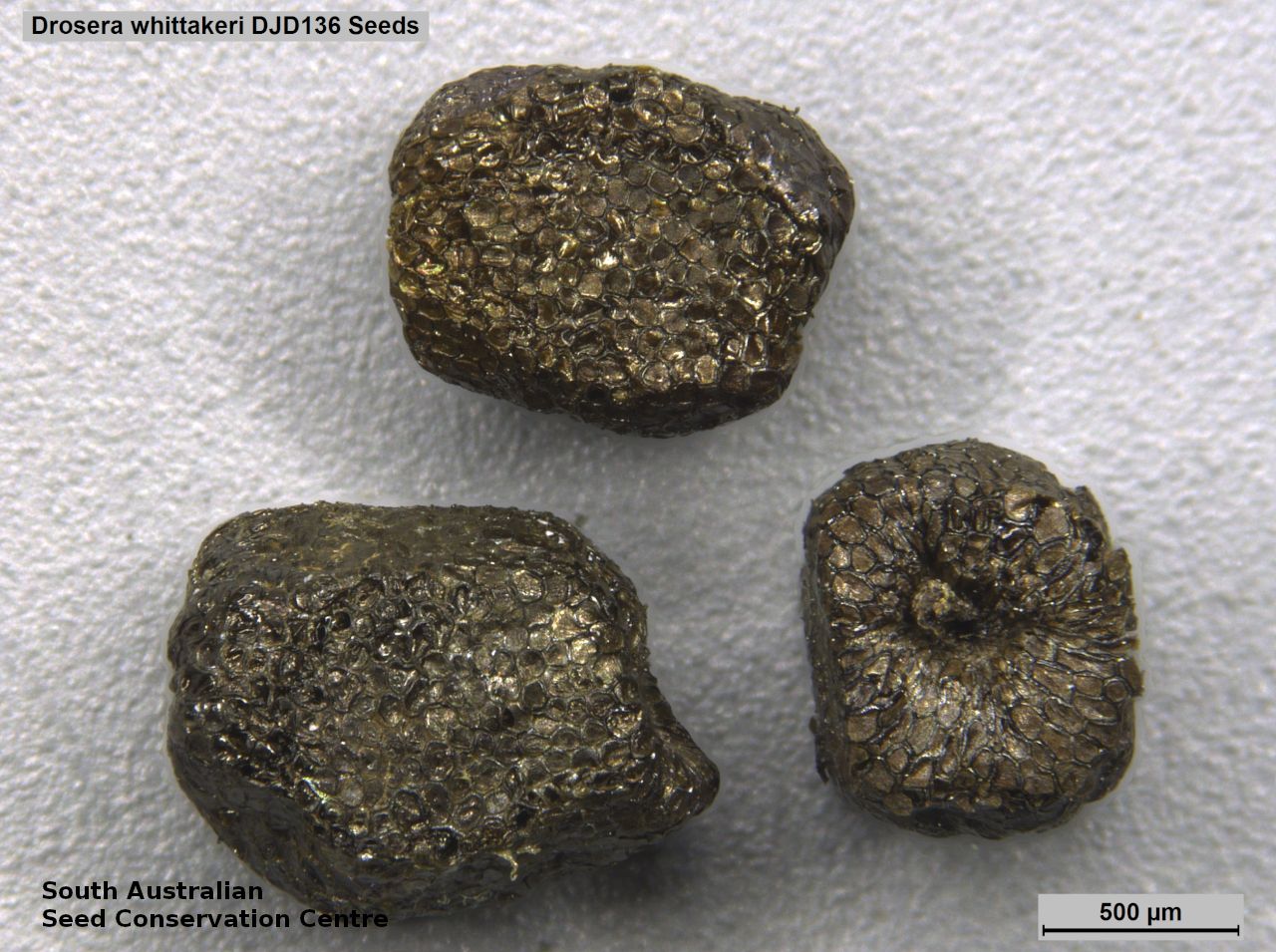

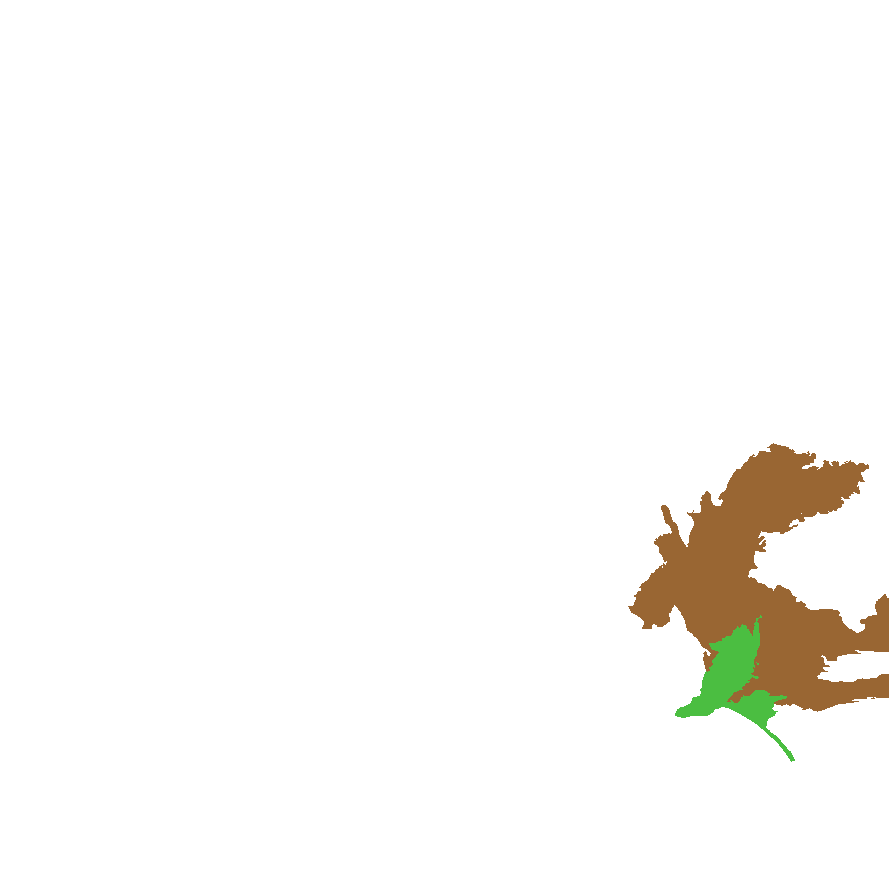
Botanical art
Prior names
Drosera whittakeri ssp. whittakeri
Sondera whittakeri
Common names
Whittaker’s Sundew
Scented Sundew
Whittaker's Sundew
Etymology
Drosera from the Greek 'droseros' meaning dewy, alluding to the glistening hairs of the glandular leaf laminae. Whittakeri named after Joseph Whittaker (1813-1894), an English botanist known for his plants collections from around Adelaide and South Australia.
Distribution and status
Found on Kangaroo Island, Mount Lofty, Murray and South-East regions in South Australia growing in open damp sites in forest, heath and woodland. Also found in Victoria. Native. Common in South Australia. Common in other States.
Herbarium regions: Northern Lofty, Murray, Southern Lofty, Kangaroo Island, South Eastern, Green Adelaide
NRM regions: Adelaide and Mount Lofty Ranges, Kangaroo Island, Northern and Yorke, South Australian Murray-Darling Basin, South East
AVH map: SA distribution map (external link)
Plant description
Small herb with a vertical stolon 2-8 cm long; leaves in a flat rosette; lamina sessile spatulate, 15-35 mm long, 5-15 mm wide. Scapes 1 to many, 2-5 cm long, 1-flowered, white. Flowering all months but especially May-November. Fruits are red-brown ovoid to globose capsule to 8 mm diameter. Seeds are black angular ovoid-cylindrical seed to 1.5 mm long, with a mesh-like surface.
Seed collection and propagation
Collect seeds between October and December. Collect mature capsules, those that are fat, hard, turning brown and contain black seeds inside. Place the capsules in a tray and leave to dry for one to two weeks. Then rub the capsules gently by hand to dislodge the seeds. Use a sieve to separate the unwanted material. Store the seeds with a desiccant such as dried silica beads or dry rice, in an air tight container in a cool and dry place. From one collection, the seed viability was high, at 100%.
| Location | No. of seeds (weight grams) | Number of plants | Date collected | Collection number Collection location | Date stored | % Viability | Storage temperature |
|---|---|---|---|---|---|---|---|
| BGA MSB | 4,600 (1.4 g) 4,600 (1.4 g) | 100+ | 6-Oct-2005 | DJD136 Southern Lofty | 1-Aug-2006 | 100% | -18°C |
Number of plants: This is the number of plants from which the seeds were collected.
Collection location: The Herbarium of South Australia's region name.
% Viability: Percentage of filled healthy seeds determined by a cut test or x-ray.